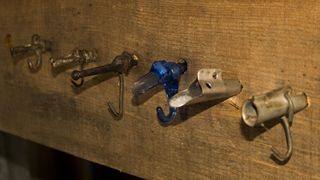Sugar Shack Tours at Charmingfare Farm’s Maple Express
Charmingfare Farm offer’s tours of their Sugar Shack during a maple event called Maple Express. During the tours of the sugar shack you will find presentations on how the sap is turned in to maple syrup. Followed by taste testing of the maple syrup over some golden pancakes.
Sugar Shack Tour includes:
- Horse-Drawn Ride
- Maple Tree & Tapping
- Authentic Sugar Shack Tour
- Taste Testing
- Maple Syrup
- Visit the Animals
Maple Sugaring Information
Maple syrup has been a staple in New England as far back as the Native Americans. The Native Americans would cut slashes in to trees and collect the sap on bark or hollowed out logs. They would then heat the sap using hot rocks to boil out the water and were left with a sticky, gooey dried form of sugar that they would use for flavoring teas, breads and stews. They would trade this sweetener to the colonists for various things and eventually taught them what trees had the best sap and how to turn that sap in to sugar. The colonists eventually found that by boiling the sap in pots over an open fire the sap would distill down in to the syrup that we all know and love today.
The maple sap flow starts when the day time temps are above 40℉ and night temps still dip below freezing. This usually starts in late February and runs till early April, although ever year is different February is when maple sugar producers will be out in their “sugar bushes” checking their trees to see how the sap is flowing. Sugar maples are not the only trees the people use for producing syrup, there are actually 22 different types of trees that you can use to collect sap for sugaring.
After deciding what trees to tap they will then tap the rest of their trees by drilling a small hole and inserting a tap. The number of taps depends on the size of the tree, trees measuring larger than 25 inches in diameter or 79 inches in circumference can have up to three taps. Trees that are 10-17 inches in diameter or 31-53 inches in circumference can only support one tap and anything smaller then that should not be taped. There are several ways that people collect the sap, some use the old school method of hanging buckets on the taps to collect the sap (this is how we collect our sap here at the farm). Larger commercial operations will use a series of plastic pipes strung from tree to tree that gravity or suction feed to a large barrel or flow straight to the sap house. It takes 40 gallons of sap to make just one gallon of syrup, this makes maple sugaring a very labor-intensive process its also what makes New England special.
So, come on down to the Charmingfare Farm and see how its this is all done in person. Our Maple Express event with the Sugar Shack tour will help you understand this uniquely New England tradition.



